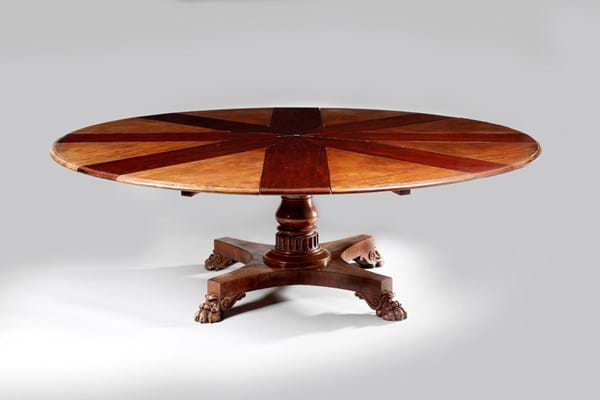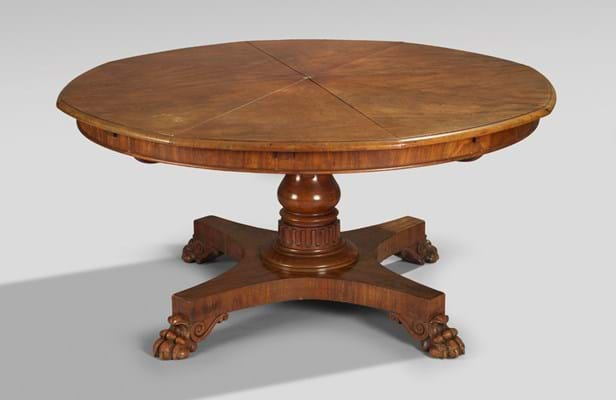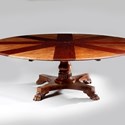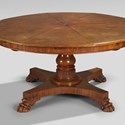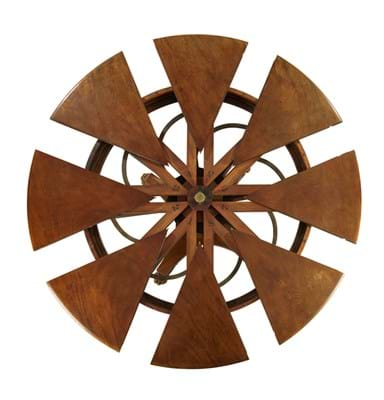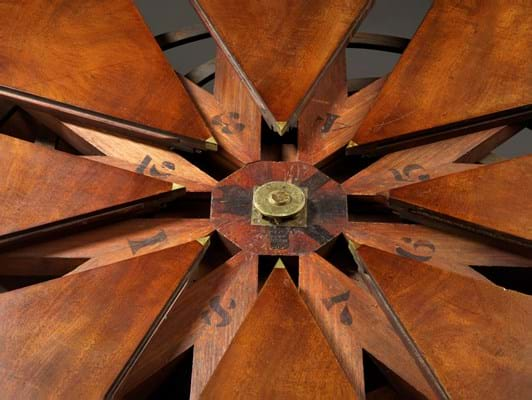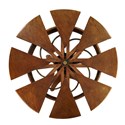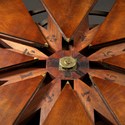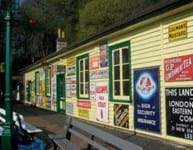These metamorphic tables, that expand from a common centre via an ingenious mechanism and a series of extra leaves, were invented by Robert Jupe, an upholsterer and cabinetmaker of 47 Welbeck Street, Cavendish Square. His patent for an ‘Improved Expanding Table’ filed in September 1835 differed from Robert Gillow’s telescoping dining table, which extended laterally, and existing radially expanding tables that ‘grew’ by clipping arc-shaped extensions to the edges.
The great and good of London society queued to watch it in action.
Jupe formed a short-lived manufacturing partnership with John Johnstone (Johnstone, Jupe & Co of 67 New Bond Street) but, after a falling out in 1842, Johnstone formed a new firm trading from the same address called Johnstone & Jeanes.

The Jupe table sold at Woolley & Wallis for £80,000 in its unextended form, with the cabinet of leaves shown on the right.
It is thought that fewer than 50 of these tables were produced. This example, with its textbook William IV or early Victorian styling, dated from the transitional period of the early 1840s. While the leaf cabinet and the central brass capstan boss are stamped for Johnstone & Jeanes, other parts of the mechanism carry only Jupe’s name.
The table measures 5ft (1.52m) when closed, 6ft (1.84m) when opened with eight small leaves and 7ft (2.15m) when fully expanded with eight larger leaves – enough for a dozen dinner guests. Each leaf has a stencilled number corresponding to those that appear on the timber bearers of the mechanism.
The auction house mentioned a number of recently sold examples with comparable bases, including that offered by Sotheby’s in London in November 2019 which sold for £100,000 (plus 25% buyer’s premium).
The present example offered on January 8 came for sale from a private couple based in Hampshire who acquired it as part of a manor house purchase around 50 years ago.
W&W specialist Mark Yuan-Richards estimated it at £30,000-50,000 and was content to see it hammered down at £80,000 (plus 25% buyer’s premium) to the London trade.
The auction – a traditional New Year opener for the British antiques trade – was 90% sold with the £700,000 total a record for a furniture and works of art auction in Salisbury. More in a future issue.


